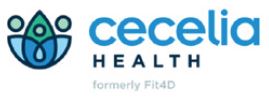Marketing: 9 Proven Steps To A Successful Brand Launch Strategy

Companies don’t often stick with their original brands—just look at these examples of famous rebrands: eBay, Marriott, Microsoft, Motorola, American Airlines, Wendy’s, Cadillac and the Tampa Bay Buccaneers to name a few. Some companies don’t even stick with their original names, like Dunkin’ Donuts changing to simply Dunkin’.
Rebranding is always done for strategic business reasons, so the rollout of your new brand should be strategic, too.
If your company is planning to launch a new brand, you undoubtedly want to make sure that the change goes over without a hitch. So, how can you leverage your existing audience for a successful rebrand without confusing anyone?
Here are nine proven steps for a successful brand launch campaign.

Yep, start with the end. Once you’ve decided a rebrand or new brand launch is necessary for your business, start by deciding a date for your Launch Day. This date should be more than 60 days in the future, so you have time to get every single process and change lined up before flipping the switch on Launch Day.

Avoid holidays and weekends.
Look at your website traffic analytics and determine what 48-hour period on your website includes the historic highest average traffic.
Consider aligning your launch date with an event, conference or promotion to increase awareness and traffic on your brand launch for a faster brand shift. (We’ll discuss why this works in step six.)

From your Launch Day, reverse-engineer all the steps you will need to take for a full and exhaustive brand launch. Identify all the areas where your brand is visible, and plan when and how you will update them. Your list should include every single small item, and might look something like this: (see Figure 1).

This list is just a sample; your list will be much longer, and the schedule will fill up for your marketing team for the two months prior to launch.
Creating a schedule in advance is a great way to stay ahead of changes, cement your brand message well in advance of any implementation and give your team a comprehensive map of how to go about the brand launch. You might have some items that you add over time, which is to be expected.

The “transitional brand” is a great way to get your existing audience used to the new name, look and brand, while acknowledging its previous iteration. It’s kind of like how consumer goods will add “New Look, Same Great Taste!” to their packaging.
If you’re simply updating a logo, a transitional brand may not be not necessary. But it is highly recommended for any brand change that includes a change in the company name.

Recently, we completed a rebranding campaign for a health care startup that was changing its name from Fit4D to Cecelia Health. To avoid confusion for its existing audience, we designed a transitional logo that included the new name with a small line under it “formerly Fit4D.”

Depending on your sales cycle, you can leave your transitional brand on your digital profiles and website for up to six months after your rebrand. The goal is to give your existing audience reassurance that they are still in the right place.
Once the transition is established and you have no prospects in the pipeline who would be confused by landing on an unfamiliar brand’s website, you can swap out the new brand without the transitional message across your digital profiles.

Why is this brand change happening? Your customers and prospects will want to know, and it is in your best interest to make it a transparent and positive change.
For Cecelia Health, I created a personalized spin on the brand change. It appealed to the customer as a human, not a sale, and added a hook to get web visitors to want to learn more about the change:

This concept drove the updated profiles across the web and inspired social posts and website messaging to clue the audience in on why the change was happening—and why it was a benefit for them.
While you might not think there’s a story to be told behind a rebrand, there always is one. Learn it, humanize it and tell your audience about it. They’ll remember the brand and understand the reason behind the change, which is a smart way to decrease any potential churn during a rebrand.

Comb through your website and digital marketing hub as it exists today and identify what downloads you will need to edit and re-upload that carry the new branding. These might include:
- Calls-to-action
- eBooks
- Whitepapers
- Tipsheets
- Email templates
- Landing pages
Develop newly branded versions of these in advance, so on Launch Day you simply need to update the links to the new files. Keep a list of what you update so you can check them all off on Launch Day.

In our sample List of Changes, I included a “New Look, Same Results” explainer page task. If you’ve developed your brand change message in Step 3, creating this new page will be simple and straightforward.
The explainer page should be easy to find, so include a link to it in your homepage hero for Launch Day and a month or two afterwards. Consider adding value to the page for prospects and include a conversion path as well as all brand change details.
If you use a marketing automation platform like HubSpot to track conversions, create a new landing page and form so you can tell which conversions can be attributed to this explainer page. This will come in handy when you get to the reporting stage after your launch.

Social media platforms have strict rules about how to change your company’s profile and associated pages or groups. These change regularly, so check directly with the different platforms to best anticipate the process each requires to change your brand in time for Launch Day.
Some platforms don’t allow a name change and require a new company profile or page to be created. You will probably be able to apply to transfer your existing audience to a new page but check the platform’s requirements before making any changes. For example, you might be required to submit a published press release to corroborate your brand change request, which requires advance coordination with your PR department.

Revisit your website’s analytics. Which search engines drive the most traffic to your site? Consider creating paid advertising campaigns on these search engines to increase awareness of your brand change.
The strategy here is to bid on both your old brand name as well as your new name for the first six months after Launch Day. Create ad copy that acknowledges the old name and the new name and creates a buzz around it. We want search users to want to learn more about your company and feel positive about the brand change from their first interaction with it.

If any one of your existing customers is going to Google, Yahoo or Bing and typing in your company’s former name, they should be able to easily recognize that the brand changed and why.
Remember when we discussed setting your Launch Day to coincide with a larger event or conference back in Step 1? This is because attendees for those events often turn to their phones to quickly research companies they encounter at the events, or for details about speakers and sessions at the event.
For our success story, we piggybacked on the swell of search traffic that was doing searches during the conference. We did this in two ways: targeting the geographical location of the conference, and bidding on conference-related terms. It allowed our new brand to get in front of a specific target audience that we knew was relevant to the company.
See Figure 2 for an example of a paid search ad piggybacking on an event.


We got in front of the conference attendees minutes after Cecelia Health presented on the mainstage, which led to a spike in engaged traffic for the rest of the conference.

Before Launch Day, set some goals to inform your launch performance metrics.

Use your existing reach and audience and add 20 percent for a tangible goal. In order to calculate your existing reach and audience, take a look at the following metrics:
- Average website page views or visitors per day
- Followers on each social media platform
- Industry benchmarks for click-thru rate and cost-per-click for ads platforms
- Average social post engagements (per post, organic or paid)
Take your average views and set a goal for impressions to reach 20 percent more than your existing average. For engagements, set a goal for 20 percent more engagements than your average. Knowing your existing audience size and average engagement rate will help you gauge whether you reached new audiences during your rebrand or are simply engaging more with your existing audience.
For our sample, we established the following goals to gauge the success of the entire launch campaign, which lasted for seven days including Launch Day:
- 2,500 impressions on social posts
- 4,000 ad impressions
- 250 engagements on social platforms
- 2,500 website pageviews
- 1.95 pageviews per user

No matter how established your brand is or how far-reaching your rebranding campaign is, having an actionable strategy and timeline in place will set your company up for success. Follow these steps to bring your old audience along, as well as grow and engage your audience moving forward.
–––––––––––––––––––––––––––––––––––––––––––––––––––––––––––––––––––
Theresa Keller is digital marketing strategist at distributor Delta Marketing Group in South Burlington, Vermont.

